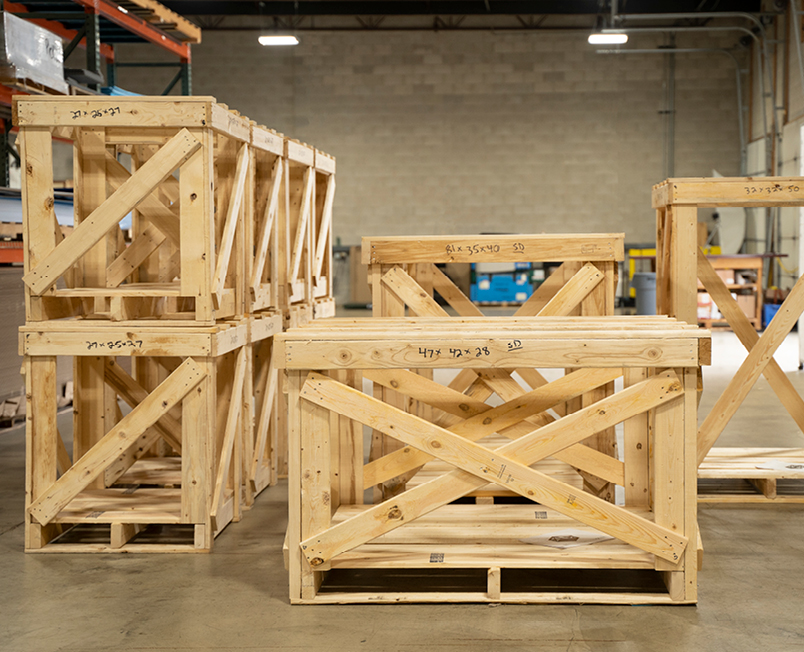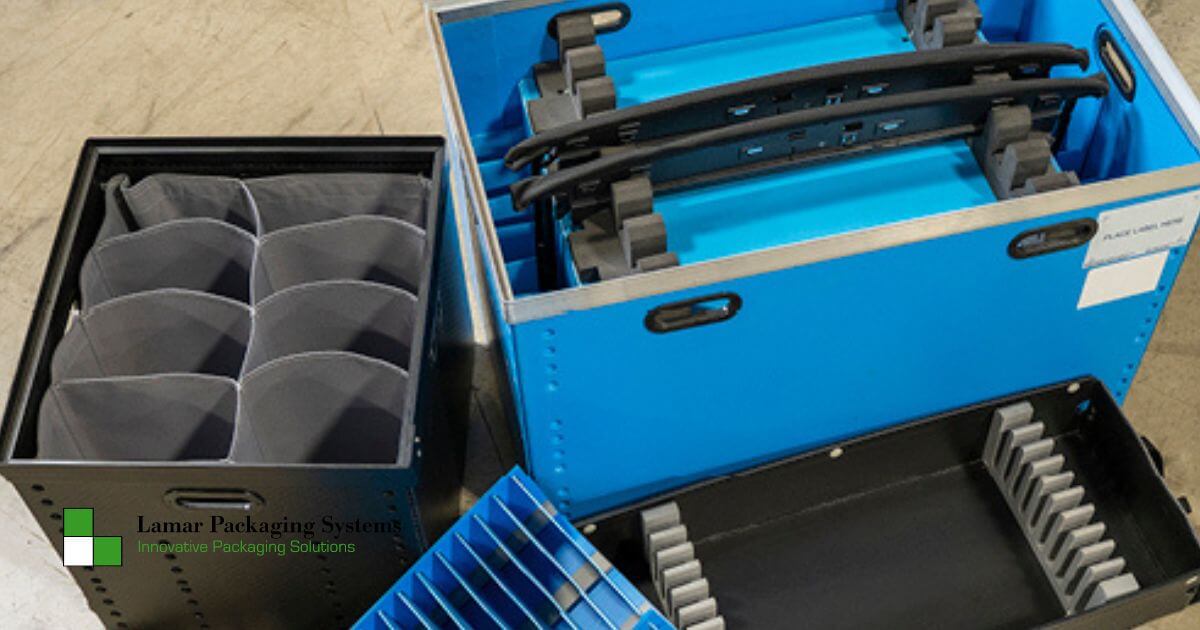Dunnage stands as the unsung hero in the shipping and logistics sector, meticulously engineered to shield and secure cargo amidst the rigors of transportation. This versatile material, encompassing options like airbags, foam, wood, and plastic, transcends mere cushioning. It is intricately designed to stabilize cargo, absorb shocks, and avert potential damage, thus ensuring goods transit from origin to destination unscathed. Tailored to accommodate various forms of transportation—be it sea, air, or land—dunnage’s significance is unparalleled, making its comprehension indispensable for stakeholders in the shipping industry. Lamar Packaging Systems, with their expertise in packaging services, recognizes the vital role of dunnage in safeguarding cargo. Its multifaceted nature not only promises protection but also underscores the criticality of selecting the right dunnage to uphold the integrity of cargo across diverse logistical challenges.
Dunnage is material used to protect and secure cargo during transportation.
Dunnage acts as the foundational layer of cargo safety during transportation, skillfully crafted to shield goods from potential harm and displacement. This protective gear spans a diverse range, including airbags, foam, wood, and plastic, each variant meticulously chosen to cater to the specific needs of different types of cargo and modes of transport. Its core purpose is to absorb shocks and stabilize cargo, ensuring that items reach their destination in the same pristine condition as they were dispatched. The strategic application of dunnage is crucial for risk minimization and the enhancement of shipping efficiency, marking it as an irreplaceable asset in the logistics and transportation sectors.
Types of Dunnage
The assortment of dunnage types mirrors its versatility in addressing the diverse needs of cargo protection. Airbags, pivotal for void filling, ensure cargo stability, preventing movement during transportation. Foam emerges as a crucial element for cushioning, especially for fragile items, offering a buffer against impacts and vibrations. Wood, including pallets and boards, provides robust support for heavier goods, while plastic variants like bubble wrap and sheets are indispensable for their lightweight, moisture-resistant, and scratch-proof qualities. Each type of dunnage is tailored to the specific requirements dictated by the cargo’s sensitivity, weight, and the unique challenges of various transportation modes, highlighting the critical role of selecting the appropriate dunnage to ensure effective cargo safeguarding.
Airbags for Void Filling in Containers
Airbags are indispensable for void filling within containers, effectively securing cargo by preventing its movement. This technique is crucial for stabilizing loads during transportation, significantly reducing the likelihood of damage.
Foam for Cushioning Fragile Items
Foam stands out for its ability to provide superior cushioning to fragile items, adeptly absorbing shocks and vibrations. Its adaptability across various products ensures that they arrive intact, safeguarding their condition.
Wood, Such as Pallets and Boards
Wooden materials, including pallets and boards, deliver robust support for heavier cargo. They not only facilitate easier handling and stacking but also optimize the loading and unloading process, enhancing overall logistical efficiency.

Plastic, Including Bubble Wrap and Sheets
Plastic protection, encompassing bubble wrap and sheets, offers a lightweight and versatile solution against scratches and moisture. This form of dunnage is ideal for securing a diverse array of items, guaranteeing their pristine delivery.
Importance of Dunnage in Shipping
Dunnage is crucial in the shipping industry, serving as the backbone for preventing damage and stabilizing cargo across all transportation modes—sea, air, or land. Its effectiveness in absorbing shocks and restricting movement ensures the safety and integrity of the cargo throughout the journey. This strategic application of dunnage not only safeguards the goods but also substantially lowers the risk of financial losses attributed to damaged items. The value of dunnage becomes even more pronounced when transporting fragile or high-value items, positioning it as an indispensable element in maintaining product quality and customer satisfaction within the shipping and logistics sector.
Prevents Damage by Absorbing Shocks
Dunnage is indispensable for its shock-absorbing qualities, safeguarding cargo against potential damage. This protective measure is particularly crucial during turbulent transport conditions, ensuring that goods maintain their integrity and arrive in pristine condition.
Stabilizes Cargo to Avoid Shifts During Transit
Stabilization of cargo through dunnage is key to minimizing the risk of load shifts during transit. This stability is vital for not only maintaining the cargo’s condition but also for preventing accidents, thereby guaranteeing the safe and secure delivery of goods.
Choosing the Right Dunnage
Selecting the appropriate dunnage is paramount, requiring a deep understanding of the cargo’s unique requirements—its fragility, weight, and the specifics of the transportation mode (sea, air, or land). The correct dunnage choice is crucial for maximizing cargo protection and enhancing the efficiency of the shipping process. Considerations such as the material’s shock-absorbing capabilities, its weight, and its environmental footprint are key factors in this decision-making process. By meticulously evaluating these aspects, shippers can drastically minimize the risk of damage, ensuring the cargo’s integrity and facilitating a seamless journey to its final destination.
Consider the Type of Cargo’s Fragility
Assessing the fragility of the cargo is paramount when selecting dunnage. Materials that offer optimal cushioning and support are essential for safeguarding delicate items against breakage and damage, ensuring their pristine arrival at the destination.
Assess Transportation Mode: Sea, Air, or Land
The choice of dunnage must also take into account the mode of transportation. Each mode—whether it be sea, air, or land—introduces specific challenges, including different levels of vibration and potential shifts. Customizing dunnage to meet the unique demands of each transportation method is crucial for maximizing cargo security and stability.
Environmental Considerations
In today’s shipping and logistics landscape, environmental considerations take a front seat in the selection of dunnage. The aim is to identify materials that not only guarantee the safety and integrity of the cargo but also have a minimal environmental footprint. Emphasis is placed on recyclable or biodegradable options that offer sustainable disposal or repurposing opportunities. Moreover, staying informed about the regulatory requirements for dunnage disposal and recycling is essential for ensuring compliance and fostering sustainability. By choosing eco-friendly dunnage, businesses can significantly contribute to sustainable industry practices, effectively reducing waste and supporting environmental health.
Use of Recyclable Materials to Reduce Waste
Employing recyclable materials for dunnage is a key strategy for reducing waste within the shipping sector. This choice not only safeguards goods during their journey but also promotes environmental sustainability by supporting the recycling and repurposing of packaging materials, thus contributing to a reduction in waste.
Impact on Disposal and Recycling Options
The type of dunnage used directly affects disposal and recycling possibilities. Opting for materials that are readily recyclable or biodegradable helps companies lessen their ecological impact and adapt more efficiently to sustainable waste management practices. This approach ensures adherence to environmental standards and fosters a more eco-friendly shipping operation.
Regulations and Compliance
Navigating the complexities of regulations and compliance is crucial for entities in the shipping and logistics sector, particularly concerning the use of dunnage. Both international and country-specific regulations play a pivotal role in dictating permissible dunnage materials, focusing on environmental stewardship and the safe transport of goods. Adhering to these regulations is vital for maintaining legal operations and fostering sustainable industry practices. It is imperative for companies to remain abreast of regulatory changes and adapt their dunnage strategies accordingly, thereby mitigating legal risks and contributing positively to a safer and greener shipping ecosystem.
International Shipping Regulations on Dunnage
Compliance with international shipping regulations related to dunnage is paramount for the safe and legal transportation of goods internationally. These guidelines are designed to safeguard the marine environment and ensure cargo integrity, specifying acceptable dunnage materials and their proper disposal or recycling protocols.
Country-Specific Environmental Compliance
Navigating country-specific environmental compliance is essential for businesses operating across national borders. Each country enforces unique laws regarding the utilization, disposal, and recycling of dunnage materials. Adhering to these diverse regulations is crucial for legal operation and contributing to the global effort of environmental sustainability within the shipping sector.
Cost Implications
The choice of dunnage has important cost implications for shipping operations. A critical balance needs to be struck between the cost of dunnage and the potential costs associated with cargo damage. Investing in high-quality dunnage may seem costly upfront but can lead to significant savings by preventing damage to goods in transit. Moreover, economies of scale can be achieved when purchasing dunnage materials in bulk, effectively reducing the cost per unit. Businesses must judiciously evaluate these financial considerations to enhance their shipping efficiency while safeguarding the safety and integrity of their cargo.
Balancing Cost of Dunnage vs. Potential Damage Costs
Finding the right balance between the cost of dunnage and the potential expenses associated with cargo damage is crucial. While lower-cost dunnage options might seem economical upfront, they could lead to increased costs due to higher rates of damage during transit. On the other hand, investing in superior dunnage can significantly reduce the risk of damage, offering long-term savings and greater peace of mind.
Economies of Scale in Purchasing Dunnage Materials
Leveraging economies of scale when procuring dunnage materials can lead to substantial cost benefits. Bulk purchases allow businesses to negotiate more favorable prices, effectively lowering the per-unit cost of dunnage. This strategic purchasing approach not only optimizes financial resources but also ensures an ample supply of high-quality dunnage for ongoing shipping requirements.
Innovations in Dunnage
The field of dunnage is witnessing significant innovations that are pushing the boundaries of cargo safety, environmental sustainability, and logistical efficiency. The introduction of biodegradable materials marks a pivotal shift towards more eco-conscious practices, providing robust protection without the environmental toll. Furthermore, the emergence of smart dunnage, embedded with tracking technologies, offers an unprecedented level of security and oversight, allowing for real-time monitoring of cargo’s condition and whereabouts. These advancements not only underscore a dedication to preserving the planet but also respond to the increasing demands for transparency and efficiency within the shipping and logistics industry.
Development of Biodegradable Options
The shift towards biodegradable dunnage marks a crucial advancement in environmental stewardship within the shipping industry. These eco-friendly alternatives are engineered to deliver robust cargo protection while facilitating a seamless return to the earth, significantly minimizing waste and fostering sustainable operations.
Smart Dunnage with Tracking Capabilities
The advent of smart dunnage ushers in a new era of cargo security and logistical efficiency. Embedded with sensors and connectivity technologies, this cutting-edge dunnage enables real-time tracking of both the location and condition of cargo, thereby enhancing the safety of goods in transit and providing invaluable insights for streamlining shipping processes.

